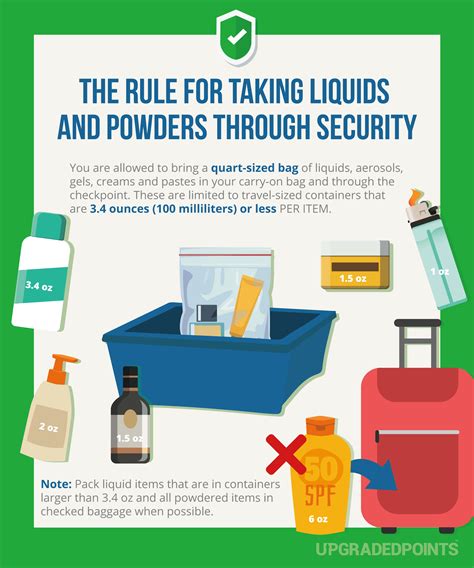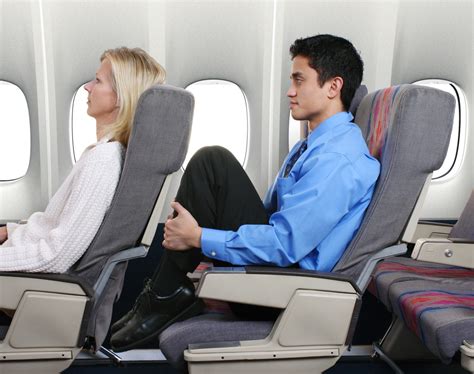
Travelers can no longer bury their quart-sized bag of liquids, aerosols, gels, creams, and pastes deep inside their carry-on luggage. The Transportation Security Administration (TSA) is now requiring passengers to remove these bags and place them in a bin for screening, a move aimed at improving security and streamlining the checkpoint process.
The TSA’s updated procedure, effective immediately at airports nationwide, mandates that all travelers present their 3-1-1 bag separately for X-ray screening. This change, according to the agency, is designed to reduce clutter in carry-on bags, allowing TSA officers to gain a clearer view of the contents and identify potential threats more efficiently. Previously, passengers were only required to remove electronics larger than a cell phone and food items from their bags. Now, the liquids bag joins that list.
“Early in the pandemic, we didn’t do this, because there was a contact issue,” TSA Administrator David Pekoske told Yahoo Lifestyle, referring to the previous practice of limiting contact between TSA officers and passengers’ belongings. “Now we’re back to doing it.”
The change is part of a broader effort by the TSA to enhance security protocols and leverage advanced technology to improve the screening process. This includes the deployment of advanced Computed Tomography (CT) scanners, which provide 3-D images of carry-on baggage, allowing officers to examine the contents from all angles. While CT technology can help identify liquids and other prohibited items, the removal of the 3-1-1 bag is still necessary to ensure thorough screening and prevent potential threats from going undetected.
The TSA’s 3-1-1 rule, in effect since 2006, limits the quantity of liquids, aerosols, gels, creams, and pastes passengers can carry in their carry-on baggage. Each item must be in a travel-sized container that is 3.4 ounces (100 milliliters) or less. All items must fit into one quart-sized, clear plastic zip-top bag. Passengers are still permitted to carry larger quantities of liquids in their checked baggage.
The new requirement is already being implemented at airports across the country, and travelers should expect to be asked to remove their 3-1-1 bag during the screening process. Passengers who fail to comply with the new rule may experience delays or additional screening. The TSA recommends that travelers familiarize themselves with the 3-1-1 rule and the new screening procedures before arriving at the airport to ensure a smooth and efficient security experience.
This policy change comes as air travel continues to rebound from the pandemic lows, with passenger numbers approaching pre-pandemic levels. The increased volume of travelers puts additional strain on TSA resources and underscores the need for efficient and effective screening procedures. By requiring passengers to remove their liquids bag, the TSA hopes to reduce the time it takes to screen each bag, thereby speeding up the overall screening process and reducing wait times for travelers.
The TSA has been working to educate the public about the new rule through its website, social media channels, and airport signage. Travelers are encouraged to visit the TSA website or follow the agency on social media for the latest updates and information. The TSA also offers a “What Can I Bring?” tool on its website, which allows travelers to search for specific items and determine whether they are allowed in carry-on or checked baggage.
While the new rule may require travelers to make slight adjustments to their packing routines, the TSA believes that it is a necessary step to enhance security and improve the overall travel experience. By working together, the TSA and travelers can ensure that the nation’s transportation system remains safe and secure.
Beyond the immediate impact on travelers, the TSA’s decision to require the removal of liquids bags reflects a broader trend towards increased security measures in the wake of evolving threats. As technology advances and new risks emerge, the TSA must constantly adapt its procedures to stay ahead of potential adversaries. This includes investing in new technologies, such as CT scanners and advanced imaging technology, as well as refining its operational procedures to ensure that security protocols are as effective as possible.
The TSA’s mission is to protect the nation’s transportation systems and ensure the freedom of movement for people and commerce. To achieve this mission, the TSA relies on a combination of technology, training, and partnerships with other government agencies and the private sector. The agency employs more than 50,000 transportation security officers who are responsible for screening passengers and baggage at airports across the country.
The TSA also works closely with law enforcement agencies, intelligence agencies, and other security partners to identify and mitigate potential threats to the transportation system. This includes sharing information, conducting joint operations, and coordinating security efforts. The agency also collaborates with airlines, airports, and other stakeholders to improve security protocols and enhance the overall travel experience.
The TSA’s efforts to enhance security are not without challenges. The agency must balance the need for security with the need to facilitate travel and commerce. This can be a difficult balancing act, as security measures can sometimes lead to delays and inconvenience for travelers. The TSA is constantly working to find ways to improve security without unduly burdening travelers.
One of the ways the TSA is working to improve the travel experience is by investing in new technologies that can speed up the screening process and reduce wait times. For example, the TSA is deploying automated screening lanes at airports across the country. These lanes use advanced technology to automatically screen baggage and identify potential threats. The TSA is also working to develop new technologies that can detect explosives and other dangerous items more quickly and accurately.
In addition to investing in new technologies, the TSA is also working to improve its training programs for transportation security officers. The agency provides its officers with extensive training on how to identify potential threats, operate screening equipment, and interact with passengers. The TSA also provides its officers with ongoing training to keep them up-to-date on the latest security procedures and technologies.
The TSA’s efforts to enhance security are making a difference. The agency has prevented numerous terrorist attacks and other security incidents. The TSA has also helped to deter crime and improve the overall safety and security of the nation’s transportation system.
Despite these successes, the TSA recognizes that there is always more work to be done. The agency is committed to continuously improving its security procedures and technologies to stay ahead of potential threats. The TSA also relies on the cooperation of travelers to help ensure the safety and security of the nation’s transportation system. By following the TSA’s guidelines and procedures, travelers can help to make the screening process more efficient and reduce the risk of security incidents.
The new rule requiring passengers to remove their liquids bag is just one example of the TSA’s ongoing efforts to enhance security. The agency will continue to evaluate its procedures and technologies and make changes as necessary to ensure that the nation’s transportation system remains safe and secure.
The TSA’s approach to security is based on a layered defense strategy. This means that the agency uses a variety of security measures to protect the transportation system. These measures include screening passengers and baggage, conducting background checks, deploying canine teams, and working with law enforcement agencies. By using a layered defense strategy, the TSA can make it more difficult for terrorists and other criminals to attack the transportation system.
The TSA also recognizes the importance of public awareness in promoting security. The agency conducts outreach programs to educate the public about security procedures and encourage them to report suspicious activity. The TSA also works with the media to provide information about security threats and procedures. By raising public awareness, the TSA can help to create a more secure environment for everyone.
The TSA is a critical component of the nation’s security infrastructure. The agency plays a vital role in protecting the transportation system and ensuring the safety and security of travelers. The TSA is committed to continuously improving its security procedures and technologies to stay ahead of potential threats. By working together, the TSA, travelers, and other stakeholders can help to ensure that the nation’s transportation system remains safe and secure.
The agency’s efforts to implement these changes have been met with mixed reactions. Some travelers have expressed concerns about the inconvenience of having to remove their liquids bag, while others have applauded the TSA for taking steps to enhance security. The TSA acknowledges that the new rule may require travelers to make some adjustments to their packing routines, but it believes that the benefits of enhanced security outweigh the inconvenience.
The TSA has been working to address travelers’ concerns by providing clear and concise information about the new rule. The agency has also been deploying additional staff at airports to help travelers navigate the screening process. The TSA is committed to working with travelers to ensure that the new rule is implemented as smoothly as possible.
The long-term impact of the new rule remains to be seen. However, the TSA believes that it will ultimately lead to a more efficient and effective screening process. By reducing clutter in carry-on bags, the TSA hopes to speed up the screening process and reduce wait times for travelers. The TSA also believes that the new rule will help to deter terrorists and other criminals from attempting to smuggle dangerous items onto airplanes.
The TSA’s decision to require the removal of liquids bags is a significant change in security procedures. The agency believes that this change is necessary to enhance security and improve the overall travel experience. The TSA is committed to working with travelers to ensure that the new rule is implemented as smoothly as possible.
The implementation of this policy also necessitates an understanding of its effects on various stakeholders, including airlines, airport authorities, and the broader tourism industry. Airlines may need to adjust boarding procedures to accommodate the potential for slightly longer security screening times. Airport authorities must ensure adequate space and resources are available at security checkpoints to handle the increased number of individual items being screened. The tourism industry, heavily reliant on efficient air travel, has a vested interest in minimizing disruptions while ensuring robust security measures are in place.
The TSA is actively monitoring the implementation of the new rule and is prepared to make adjustments as needed. The agency is also working to communicate the changes effectively to travelers through various channels, including its website, social media, and airport signage. By keeping travelers informed and addressing their concerns, the TSA hopes to minimize any negative impact on the travel experience.
The new rule, while primarily focused on enhancing security, also has implications for sustainability. The increased use of plastic zip-top bags for liquids may contribute to plastic waste. The TSA encourages travelers to reuse their 3-1-1 bags whenever possible and to dispose of them properly. The agency is also exploring alternative, more sustainable options for packaging liquids.
The TSA’s decision to require the removal of liquids bags is a complex issue with a wide range of implications. The agency is committed to working with all stakeholders to ensure that the new rule is implemented effectively and that the nation’s transportation system remains safe and secure.
The effectiveness of the new TSA rule will also depend on passenger compliance and understanding of the requirements. Clear and consistent communication from the TSA is crucial to ensure that travelers are aware of the rule and understand how to comply. The TSA is utilizing various communication channels, including public service announcements, airport signage, and social media, to reach travelers with information about the new requirements.
To facilitate smoother transitions at security checkpoints, passengers are advised to pack their 3-1-1 bags in an easily accessible location within their carry-on luggage. This will help to expedite the screening process and minimize delays. Passengers should also be prepared to remove electronic devices larger than a cell phone and food items from their carry-on bags, as these items are also subject to separate screening.
The TSA is also working to improve the training of its security officers to ensure that they are equipped to handle the new requirements effectively. Security officers are being trained on how to identify potential threats and how to assist passengers with the new procedures. The TSA is committed to providing its officers with the resources and support they need to perform their duties effectively.
The new TSA rule is a significant step towards enhancing security at airports across the country. The agency is committed to working with travelers, airlines, airport authorities, and other stakeholders to ensure that the rule is implemented effectively and that the nation’s transportation system remains safe and secure.
The potential benefits of the new rule include reduced screening times, improved threat detection, and enhanced overall security. The TSA is confident that the new rule will help to make air travel safer and more secure for everyone.
However, some security experts argue that focusing solely on liquids may be a disproportionate response to the threat landscape. They suggest that resources could be better allocated to other areas, such as behavioral detection or advanced screening technologies. The TSA continues to evaluate its security procedures and to make adjustments as needed based on evolving threats and technological advancements.
The new rule also highlights the importance of passenger cooperation in maintaining security. Travelers are encouraged to report any suspicious activity to airport personnel or law enforcement officials. By working together, the TSA and the traveling public can help to keep the nation’s transportation system safe and secure.
The new TSA rule is a reminder that security is an ongoing process that requires constant vigilance and adaptation. The TSA is committed to staying ahead of potential threats and to providing the traveling public with the highest level of security possible.
Frequently Asked Questions (FAQ)
1. What exactly is the new TSA rule regarding liquids in carry-on baggage?
The new TSA rule mandates that all passengers must remove their quart-sized bag containing liquids, aerosols, gels, creams, and pastes (known as the 3-1-1 bag) from their carry-on luggage and place it in a separate bin for X-ray screening at airport security checkpoints. This is a change from previous practices where passengers could sometimes leave the liquids bag inside their carry-on. According to TSA Administrator David Pekoske, the change is in effect as of the article’s writing to improve the screening process by providing TSA officers a clearer view of the contents inside carry-on bags.
2. What is the 3-1-1 rule, and does it still apply?
Yes, the 3-1-1 rule remains in effect. This rule limits the quantity of liquids, aerosols, gels, creams, and pastes that passengers can carry in their carry-on baggage. Specifically, each item must be in a travel-sized container that is 3.4 ounces (100 milliliters) or less. All of these items must fit into one quart-sized, clear plastic zip-top bag. Passengers are still permitted to carry larger quantities of liquids in their checked baggage. The new rule simply adds the requirement that this 3-1-1 bag be removed from the carry-on and screened separately.
3. Why is the TSA implementing this new rule now?
The TSA states the primary reason for implementing this rule is to enhance security and improve the efficiency of the screening process. By removing the liquids bag, TSA officers can get a clearer view of the contents of the carry-on bag, making it easier to identify potential threats. The separation of liquids also allows for more focused screening of those items. TSA Administrator David Pekoske noted that the removal of liquids bags was paused early in the pandemic due to concerns about contact, but the practice is now being reinstated.
4. What happens if I forget to remove my liquids bag from my carry-on?
If you forget to remove your liquids bag, you will likely be asked to do so by a TSA officer. This will require you to open your carry-on bag and remove the liquids bag, which may cause delays for you and other passengers. In some cases, the TSA officer may need to conduct additional screening of your carry-on bag. To avoid these inconveniences, it is best to remember to remove the liquids bag and place it in a separate bin before your bag goes through the X-ray machine.
5. Will this new rule significantly increase wait times at airport security?
The TSA hopes that this rule will ultimately help to reduce wait times by streamlining the screening process. By having a clearer view of the contents of carry-on bags, TSA officers may be able to identify potential threats more quickly and efficiently, which could lead to faster screening times. However, in the initial stages of implementation, there may be some delays as passengers adjust to the new procedures. The TSA is working to educate the public about the new rule and deploy additional staff at airports to help travelers navigate the screening process. The ultimate impact on wait times will depend on how effectively the rule is implemented and how well passengers comply with the new procedures.









